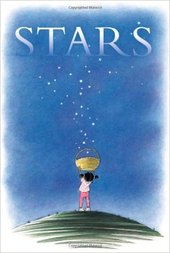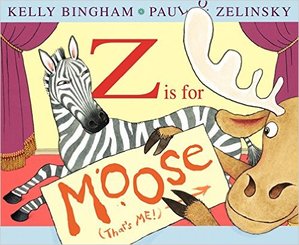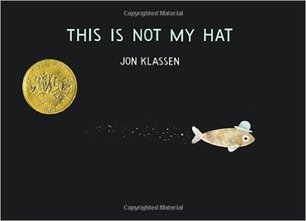About the book: Stars written by Mary Lyn Ray illustrated by Marla Frazee This book explores all kinds of stars: the ones in the night sky, yellow stars on pumpkin vines, and when you feel shiny as a star.
Objective: The student will be able to create a star using materials available
TEKS: Math – Kindergarten – Knowledge and Skills – Geometry and Measurement – create two dimensional shapes using a variety of materials and drawings; Grade 1 -Knowledge and Skills – Geometry and Measurement – create two dimensional shapes; Grade 2 – Knowledge and Skills – Geometry and Measurement – create two dimensional shapes based on given attributes, including numbers of sides and vertices
Modifications: Depending on grade level and ability of students have patterns available, star stickers, and talk about attributes of stars (how many vertices, etc.)
Materials: book Stars, paper, pencils, star patterns, colors, star stickers, scissors and (optional: glitter, glue, paint, foil to decorate stars)
Introduction: read Stars to students
Body: While reading book discuss places you can find stars. Where might students see stars everyday? Are there any stars the students can see right now?
Conclusion: Have students create a star to take with them.
Assessment: Were students able to successfully create star shapes and discuss where stars can be seen?
Objective: The student will be able to create a star using materials available
TEKS: Math – Kindergarten – Knowledge and Skills – Geometry and Measurement – create two dimensional shapes using a variety of materials and drawings; Grade 1 -Knowledge and Skills – Geometry and Measurement – create two dimensional shapes; Grade 2 – Knowledge and Skills – Geometry and Measurement – create two dimensional shapes based on given attributes, including numbers of sides and vertices
Modifications: Depending on grade level and ability of students have patterns available, star stickers, and talk about attributes of stars (how many vertices, etc.)
Materials: book Stars, paper, pencils, star patterns, colors, star stickers, scissors and (optional: glitter, glue, paint, foil to decorate stars)
Introduction: read Stars to students
Body: While reading book discuss places you can find stars. Where might students see stars everyday? Are there any stars the students can see right now?
Conclusion: Have students create a star to take with them.
Assessment: Were students able to successfully create star shapes and discuss where stars can be seen?



 RSS Feed
RSS Feed
